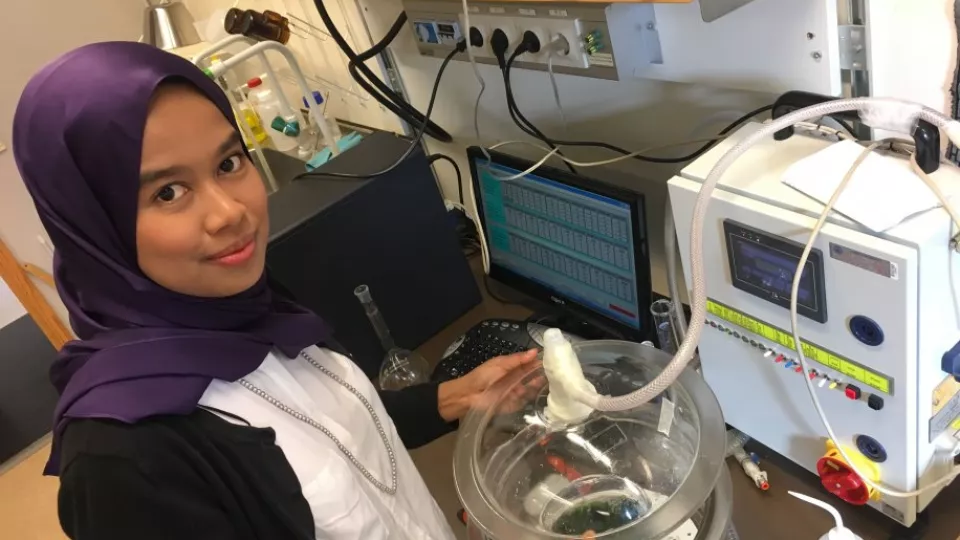Nitrate is a common nutrient for plants and is therefore also present in other leafy green vegetables, such as arugula and chard. In our bodies, nitrate can be converted into toxic substances which reduce the transport of oxygen, especially in infants.
Liyana Yusof, a doctoral student in food technology, has developed a method which modifies the metabolism in the spinach leaves in such a way that nitrate is broken down.
The secret is, somewhat simplified, sugar and vacuum. The method stimulates the metabolic activity by which the leaves convert nitrate into proteins. The energy needed to do this is normally retrieved from the leaf’s store of ordinary sugar.
“Placing the leaves in a sugar solution and then vacuum-treating them forces the sugar molecules to get into the leaves, stimulating their metabolism, so that the nitrates are reduced”, says Liyana Yusof.
The process does not make the spinach more calorific, as the sugar molecules are metabolized together with the nitrate. The type of sugar used is of no consequence. According to Liyana Yusof, the technique is cost efficient, and vacuum treatment is already used in some cases to pre-treat fruit and vegetables.
The thesis work included laboratory tests with other substances to achieve partially different effects: calcium lactate to preserve the crispness of the leaves and vitamin C to preserve their colour. As this part of the thesis was more focused on basic research, it is too early to draw any conclusions.
The method of nudging metabolism in various directions also seems capable of extending the shelf-life of leafy greens, which is convenient and reduces the risk of waste. This particular doctoral thesis did not focus in detail on that aspect.
The studies of the metabolism of spinach were conducted in collaboration with supervisor Federico Gomez, food technology, and Allan Rasmusson, plant physiologist at the Department of Biology, Lund University.
Doctoral thesis: Vacuum Impregnation of Spinach Tissue: Metabolic Consequences and their Potential Industrial Applications
